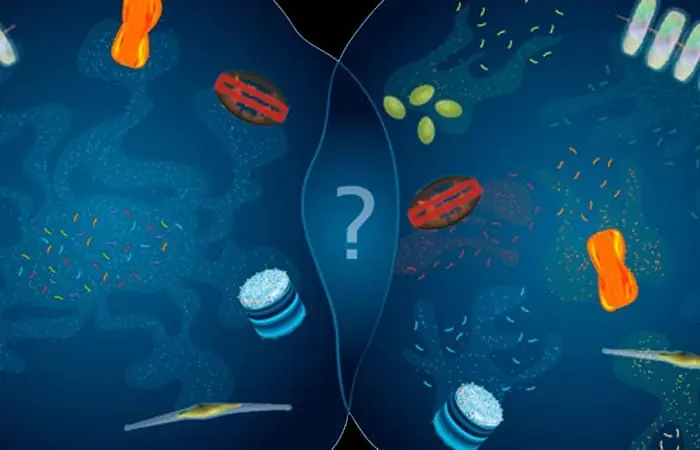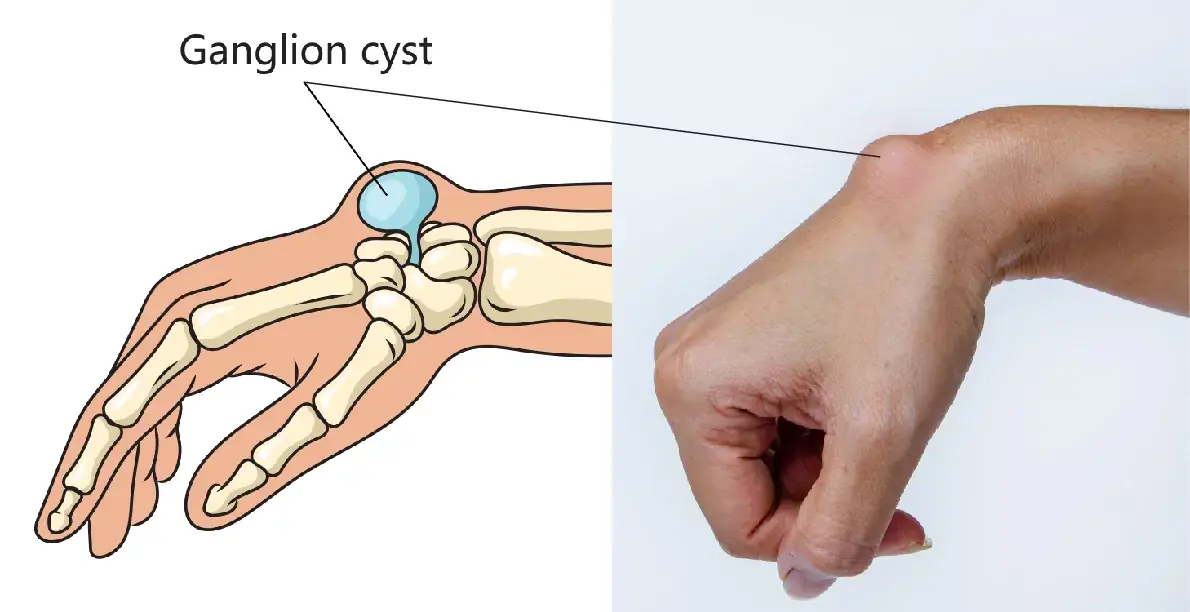
7 supermarket sale items employees advise against buying, no matter how cheap
7 Items Supermarket Staff Advise Against Buying, No Matter How Big the Discount, Due to Concerns Over Quality.

Leg Cramps at Night: What Causes Them and How to Fix the Problem
If you've ever woken up in the middle of the night with a sharp, painful cramp in your leg, you're not alone. Nocturnal leg cramps, which occur during the night or when you’re trying to sleep, are quite common, especially among older adults. While they can be extremely painful, they are usually temporary and can be managed with the right approach. In this post, we’ll discuss the most common causes of leg cramps at night and effective ways to prevent and treat them.
What Are Leg Cramps?
Leg cramps are sudden, involuntary contractions or spasms of one or more muscles in your leg. These cramps typically occur in the calf muscles, but can also affect other parts of the leg, such as the thighs or feet. The pain from a leg cramp can last from a few seconds to several minutes and can leave the muscle sore afterward.
Common Causes of Nighttime Leg Cramps
1. Dehydration
One of the primary causes of leg cramps at night is dehydration. When the body lacks enough fluids, the muscles can become fatigued and more prone to cramping. This is why it’s important to drink plenty of water throughout the day.
2. Electrolyte Imbalance
Electrolytes like potassium, magnesium, and calcium are essential for muscle function. A deficiency in any of these minerals can lead to muscle cramps. Diets low in these key nutrients or an imbalance caused by excessive sweating, certain medications, or medical conditions can contribute to cramping at night.
3. Poor Circulation
Inadequate blood flow to the legs due to sitting or lying down for long periods can trigger cramps. When circulation is poor, muscles may not get enough oxygen or nutrients, increasing the likelihood of cramping.
4. Prolonged Inactivity or Overuse
Whether you're sitting for extended periods of time or exercising intensely, both prolonged inactivity and excessive exercise can strain muscles, leading to cramps. For example, athletes or people who are on their feet a lot may experience cramps if they suddenly stop or change their routine.
5. Pregnancy
Pregnant women often experience leg cramps due to changes in circulation, fluid balance, and the increased pressure on their legs as the baby grows. Hormonal changes and an increased need for certain minerals can also contribute to cramping.
6. Certain Medications
Some medications, such as diuretics (used for high blood pressure) or statins (used to lower cholesterol), may increase the likelihood of leg cramps as a side effect.
7. Underlying Health Conditions
Chronic conditions such as diabetes, peripheral artery disease (PAD), and kidney disease can also increase the risk of leg cramps, particularly at night.
How to Fix the Problem: Effective Solutions for Nighttime Leg Cramps
While nighttime leg cramps can be painful and frustrating, there are several ways you can prevent and manage them.
1. Stay Hydrated
Drinking enough water throughout the day is essential for preventing cramps. Aim for at least 8 cups of water daily, and more if you're physically active or live in a hot climate.
2. Stretch and Massage
Regular stretching before bedtime can help prevent cramps by keeping your muscles flexible. Gentle calf stretches, ankle rotations, and hamstring stretches are especially effective. If you experience a cramp, gently massage the affected muscle to relieve the spasm.
3. Balance Your Electrolytes
Eat a well-balanced diet rich in potassium, magnesium, and calcium. Foods like bananas, sweet potatoes, spinach, yogurt, and almonds can help replenish these essential minerals. In some cases, your doctor might recommend electrolyte supplements to restore balance.
4. Improve Circulation
Make sure to move around during the day to improve circulation. If you have a sedentary job, take breaks to stand up, stretch, and walk around. Elevating your legs before bed can also help increase blood flow and reduce cramping.
5. Wear Proper Footwear
Wearing shoes that provide good support can prevent cramps, especially if you're on your feet for extended periods. Avoid wearing high heels or shoes that cause poor posture or misalignment in your feet.
6. Use Heat or Cold Therapy
Applying a heating pad to the affected leg or taking a warm bath before bed can relax your muscles and reduce the likelihood of cramps. Cold packs can also be used to relieve pain if the muscle is sore after a cramp.
Consider Medications or Supplements
If cramps are persistent, consult your healthcare provider about possible treatments. Some individuals may benefit from supplements like magnesium or potassium, or certain muscle relaxants to reduce cramping.
When to Seek Medical Attention
In most cases, leg cramps are harmless and can be managed with simple lifestyle changes. However, if cramps are frequent, extremely painful, or associated with swelling, numbness, or tingling, it’s important to consult a doctor. These could be signs of an underlying medical condition that requires further evaluation.
Conclusion
Nighttime leg cramps can be a painful and disruptive condition, but they are often preventable with the right lifestyle adjustments. By staying hydrated, maintaining a balanced diet, stretching regularly, and improving circulation, you can significantly reduce your risk of experiencing cramps. If the problem persists or worsens, it’s important to consult a healthcare professional for further guidance.
Sources:
National Institute of Neurological Disorders and Stroke (NINDS). "Leg Cramps Fact Sheet."
Mayo Clinic. "Leg Cramps."
WebMD. "How to Prevent and Treat Leg Cramps."

7 Items Supermarket Staff Advise Against Buying, No Matter How Big the Discount, Due to Concerns Over Quality.

As consumers become increasingly cautious about the quality of cooking oils, many are turning to animal fats as a complete alternative. But is this truly a wise decision for health?

A woman from Guadeloupe has been identified as the only person in the world with a completely new blood type

It’s not the air conditioner, but the refrigerator that’s the real culprit behind your skyrocketing electricity bills. Improper placement of this appliance can also lead to increased energy consumption.

Heavy metal pollution has become an invisible threat to modern human health. Studies reveal that up to 87% of people have varying levels of heavy metals lingering in their bodies.


Esophageal cancer is becoming a significant health threat. This article will explore the key risk factors, high-risk groups, and underlying conditions that may lead to esophageal cancer, helping you gain a deeper understanding of this dangerous disease.

Not All Bananas Are Worth Buying: 4 Types You Should Avoid, Even at Discounted Prices

While many popular brands promise superior protection, the reality is that some products fail to meet the standards necessary to effectively safeguard your skin.

The recent case of lead poisoning from a metal water bottle serves as a stark reminder of the potential health risks associated with using old or damaged bottles.

The recent surge in hepatitis A infections across Europe and the UK serves as a reminder of the importance of proper food hygiene and vaccination, especially when traveling to regions with higher risks of the virus.

Discover the fascinating world of marine viruses and their vital role in ocean ecosystems. With up to 10 million virus particles in a single drop of seawater, learn how these tiny entities influence microbial populations, nutrient cycles, and the environm

While turkey neck can be a cosmetic concern, there are several non-invasive treatments and lifestyle changes that can help improve the appearance of sagging neck skin.

Discover the foods you should avoid for a healthy heart, including trans fats, excess sugar, and processed meats.

Discover the amazing health benefits of eating bananas every day. From improved digestion and heart health to boosting mood, find out how this simple fruit can transform your body. Learn more in our comprehensive guide.

Learn about ganglion cysts, including their causes, how daily activities like repetitive movements and poor posture can make them grow, and expert tips on prevention. Discover when to seek medical attention and ensure proper joint health.

Learn how magnesium supports bone health, blood sugar management, anxiety relief, and digestive health. Find out the best forms, dosages, and foods rich in magnesium to boost overall well-being and manage health conditions.

Discover the health benefits of cabbage, from its anti-cancer properties to digestive support. Learn who should avoid cabbage due to thyroid issues, blood clotting disorders, and more. Understand its nutritional value and side effects for a healthier diet


7 Items Supermarket Staff Advise Against Buying, No Matter How Big the Discount, Due to Concerns Over Quality.

As consumers become increasingly cautious about the quality of cooking oils, many are turning to animal fats as a complete alternative. But is this truly a wise decision for health?

A woman from Guadeloupe has been identified as the only person in the world with a completely new blood type

It’s not the air conditioner, but the refrigerator that’s the real culprit behind your skyrocketing electricity bills. Improper placement of this appliance can also lead to increased energy consumption.

Heavy metal pollution has become an invisible threat to modern human health. Studies reveal that up to 87% of people have varying levels of heavy metals lingering in their bodies.

By incorporating these natural methods into your daily routine, you can strengthen your teeth, support your gums, and prevent further decay.


Agatha Christie, the Queen of Crime Fiction, vanished for 11 days in 1926, leaving the world in suspense. Discover how personal heartbreak led to her greatest creative revival and the birth of her most iconic works.

Parents of tweens and teens, listen up! Discover the powerful 'Add 20% Rule' for effective communication. Learn why assuming your child knows more than you think about topics.

Esophageal cancer is becoming a significant health threat. This article will explore the key risk factors, high-risk groups, and underlying conditions that may lead to esophageal cancer, helping you gain a deeper understanding of this dangerous disease.

Yvette Kahn’s tragic story is a powerful reminder of innocence lost during the Holocaust. Despite the horrors she faced, Yvette found music in a world that tried to silence her. Remembering her is a call to preserve the beauty and resilience of childhoo

This DIY flaxseed-based skincare routine offers a natural, affordable, and effective way to combat wrinkles and promote a more youthful appearance.

Kandice Pritchard-Harmon's adoption as a preteen began a journey filled with identity struggles and cultural shifts. Discover how her quest for freedom led to a transformative enlistment in the U.S. Army, building resilience, global experiences, and a pow


Try these simple, effective remedies and enjoy the benefits of natural hair care. O

Carla’s curiosity led her to follow two lonely twin girls in the park, but what she uncovered about their tragic home life sh0cked her to the core.

Natural remedies, on the other hand, provide a safe, affordable, and effective way to promote thicker, longer, and healthier eyelashes over time.

After years of looking down on his ex-wife, Anton's world is turned upside down when he sees her in a luxurious mansion, living a life he never imagined. A gripping tale of pride, revenge, and the consequences of underestimating someone’s strength.

Packed with skin-loving nutrients like vitamin C, antioxidants, omega-3 fatty acids, and collagen-boosting compounds, this gel can transform your skin, providing deep hydration, elasticity, and a youthful glow.

Not All Bananas Are Worth Buying: 4 Types You Should Avoid, Even at Discounted Prices